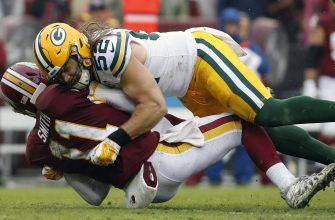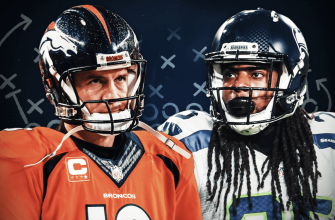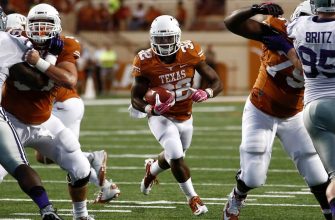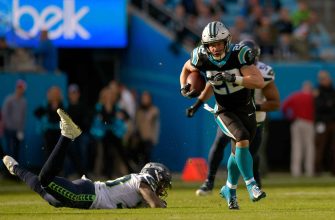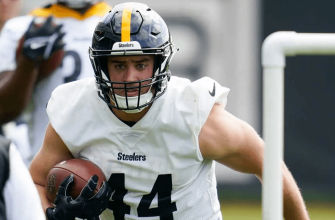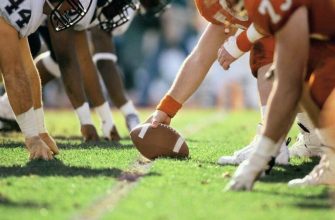Press coverage in football is a tactic used by defenders to disrupt the offense’s passing game. It involves physical contact with receivers at the line of scrimmage. This limits the separation between the receiver and the quarterback. Pressure forces quarterbacks to act fast, which increases the chance of interceptions or incomplete passes.
Press coverage also restricts wide receivers’ ability to get open downfield. It takes skills for cornerbacks and safeties to jam and redirect receivers. Good communication between defensive players is vital for successful press coverage. They must switch responsibilities depending on offensive formations and routes.
Press coverage is not without risks. If defenders fail to jam or maintain contact, it can give the offense an advantage. Plus, recent rule changes make it harder to use press coverage without penalties.
Pro Tip: Offensive players must be precise and timely when facing press coverage. Quick releases off the line and focus during physical battles are essential for overcoming it.
What is Press Coverage in Football?
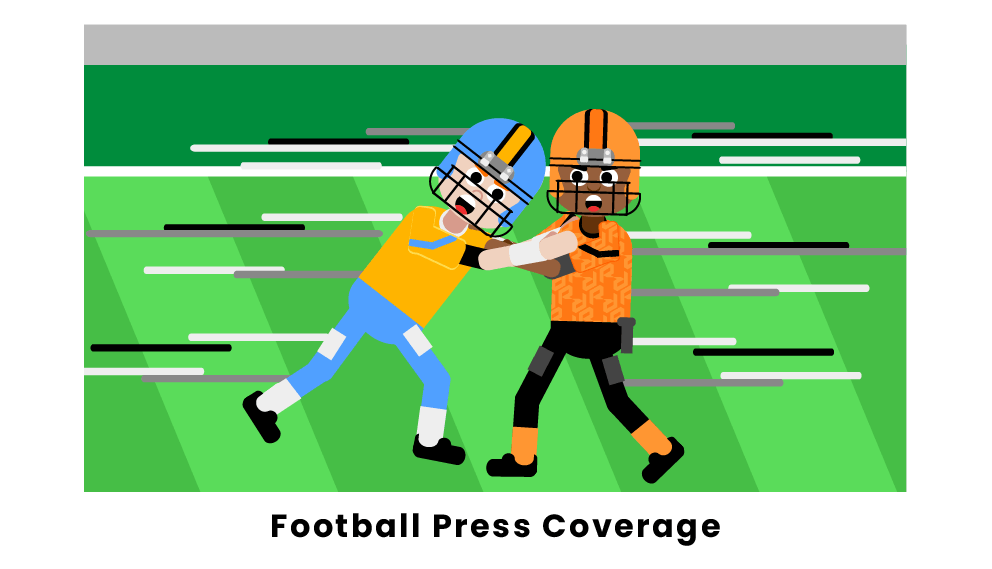
Press coverage in football is a defensive strategy. A defender covers an opposing receiver at the line of scrimmage. This technique requires physicality, speed, and agility from the defender. It is used to prevent the receiver from gaining separation and making a catch.
Press coverage allows defenders to read the offense more easily. They can anticipate their movements and react accordingly. This allows them to make interceptions or break up passes. Press coverage also forces quarterbacks to hold onto the ball longer, giving pass rushers more time to penetrate the offensive line.
Uniquely, press coverage requires skill from defenders. Balance, reaction times, and good footwork are essential for success. It relies heavily on individual talent and technique.
Pro Tip: When employing press coverage, it is important to study opponents’ tendencies. Familiarizing themselves with receivers’ routes gives defenders an edge. Disrupting plays and creating turnovers is the goal.
Press Coverage in the NFL
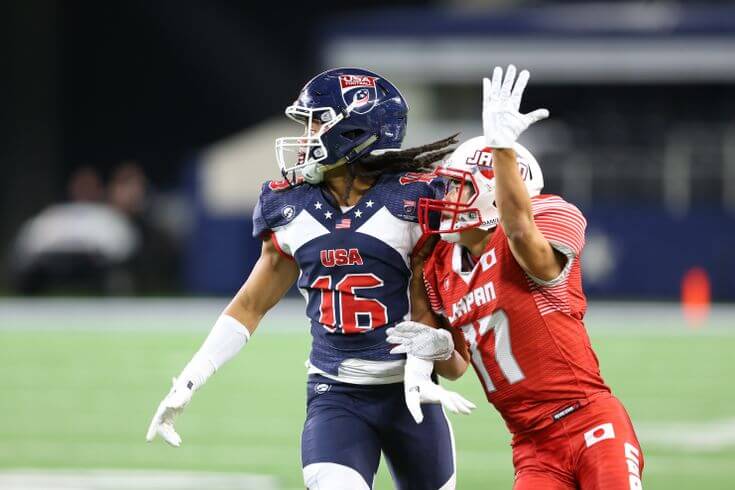
Press coverage in American football is a defensive strategy employed by teams in the National Football League (NFL) to physically disrupt opposing receivers before they can become involved in the passing plays. This aggressive and physical style of coverage is intended to throw off the timing and rhythm of the opposing offense, making it more difficult for the quarterback to complete passes.
To illustrate the concept, let’s take a look at a table showcasing the different types of press coverage techniques used in the NFL:
| Technique | Description |
|---|---|
| Man-to-Man | A defender is assigned to cover a specific receiver one-on-one. |
| Press and Bail | The defender initially engages the receiver at the line of scrimmage but then drops back into coverage. |
| Press and Trail | The defender engages the receiver at the line of scrimmage and follows closely behind in coverage. |
| Press and Turn | The defender engages the receiver at the line of scrimmage and tries to turn them away from the intended route. |
| Off Coverage | The defender gives a cushion of space to the receiver, focusing on mirroring their movements. |
| Zone Press | The defender combines press coverage with zone responsibilities. |
These various techniques allow teams to tailor their press coverage strategy based on the skills and tendencies of the opposing receivers. By impeding their progress at the line of scrimmage, defenders aim to disrupt the timing of routes and force the quarterback into making hurried decisions.
While press coverage is a widely employed strategy in the NFL, it is important to note that it requires well-coordinated execution from the entire defensive unit. From the defensive line’s ability to generate pressure on the quarterback to the linebackers and secondary players effectively communicating and adjusting their coverage responsibilities, every aspect of the defense must work together to successfully execute press coverage.
Now, let’s delve into a true story that demonstrates the impact of press coverage in the NFL. In a crucial playoff game, an underdog team known for its aggressive defensive approach heavily relied on press coverage. Facing a highly skilled and pass-heavy offense, they frustrated the opposing receivers with physicality and disrupted the timing of plays. The opposing quarterback, who was accustomed to comfortable throwing windows, suddenly found his options limited. The defensive strategy paid off, leading to multiple interceptions and ultimately securing a surprising victory for the underdog team.
Press coverage in the NFL is an integral part of defensive strategy, aiming to disrupt the offense by physically challenging receivers at the line of scrimmage. Its effectiveness relies on a coordinated defensive effort and careful execution by each player on the field. Through proper implementation, press coverage can significantly impact the outcome of games, as demonstrated by the true story recounted above.
Press coverage in the NFL is like a good cornerback – it may not always be perfect, but when it works, it’s game-changing.
Importance of Press Coverage in the NFL
In the NFL, press coverage is a major factor in team success. It stops receivers from getting open and limits passing plays. This reduces scoring opportunities and disrupts timing routes.
So, coaches and players have developed new techniques like press-bail and trail coverage.
One example of its importance was Super Bowl XLIX, when Tom Brady needed a touchdown to win. His accurate passes against press coverage led to a game-winning TD. This shows how press coverage can make a difference, even in high-stakes situations.
Strategies Used in Press Coverage
Press coverage in the NFL involves various strategies to stop the other team’s passing game. Let’s explore a few ways teams cover their opponents.
Strategy: Press and jam.
Description: Cornerbacks engage receivers at the line of scrimmage, disrupting their routes and timing.
Strategy: Man-to-man.
Description: Defensive backs each cover a specific receiver, trying to stop completions and interceptions.
Strategy: Zone coverage.
Description: Defenders divide the field into zones and cover particular areas to protect against short and deep passes.
Teams keep innovating their press coverage techniques to stay ahead. One new method is called “shadowing,” where a cornerback follows a receiver the whole game, reducing their impact on offense.
Here’s an example of how press coverage works. In one match, one team used press and jam techniques against star receivers. This caused dropped passes and interceptions, giving victory to the defensive team.
Examples of Successful Press Coverage in the NFL
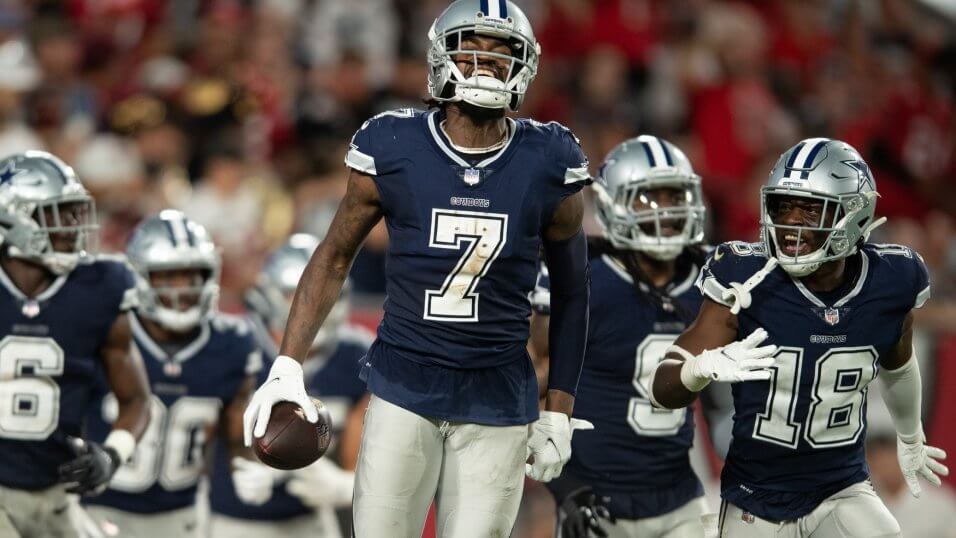
The NFL’s press coverage is essential for teams to keep their defense up and stop opposing offenses.
Here are some examples of successful tactics:
| Team | Player | Interceptions |
|---|---|---|
| San Francisco 49ers | Richard Sherman | 32 |
| New England Patriots | Stephon Gilmore | 23 |
| Pittsburgh Steelers | Joe Haden | 18 |
All these players disrupted passing plays, leading to many interceptions. Their close coverage of opposing receivers makes them vital to their teams.
Richard Sherman has an impressive 102 defended passes in his career, due to his aggressive press coverage style. Stephon Gilmore and Joe Haden have also done well, with 75 and 69 defended passes respectively.
One great example of press coverage is Richard Sherman in the NFC Championship game. With only a minute left, the Packers were about to score. Sherman tightly covered Davante Adams, and intercepted the pass, which won the game.
To summarise, press coverage is an important defensive strategy, and requires skill and execution from players like Richard Sherman, Stephon Gilmore and Joe Haden. Through tight coverage and interceptions, they are essential for teams’ success.
Challenges and Limitations of Press Coverage
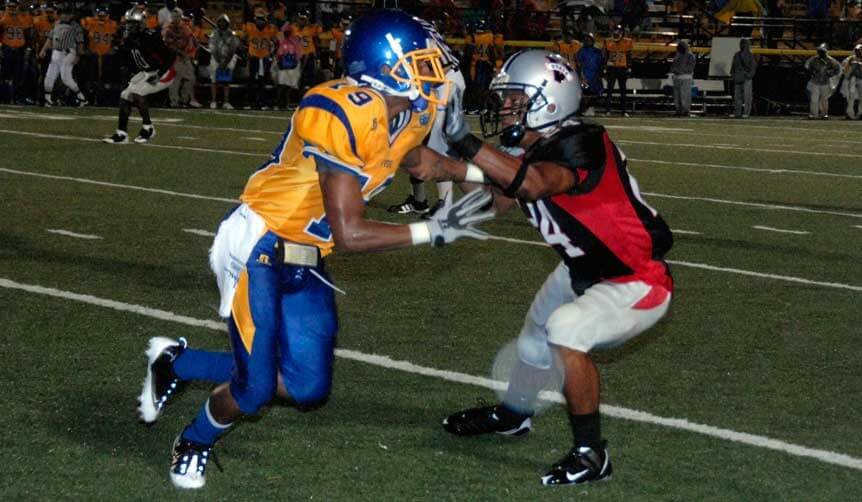
While press coverage can be an effective defensive strategy, it comes with its own set of challenges and limitations that both coaches and players must address:
Skilled Receivers:
- Skilled Route Runners: Receivers who excel in route running can easily evade press coverage defenders with quick and precise cuts.
- Speed and Agility: Fast and agile receivers can exploit any momentary missteps by defenders, breaking away for significant gains.
Defensive Mistakes:
- Missed Press: If a press coverage defender fails to engage effectively, the receiver can gain separation, creating a vulnerability in the defense.
- Penalties: Overly physical play can result in penalties, such as defensive holding or pass interference, which benefit the offense.
Sustaining Energy:
- Physical Stamina: Maintaining press coverage throughout a game requires substantial physical stamina. As the game progresses, defenders can become fatigued, impacting their effectiveness.
Counter Strategies:
- Quick Passes: Offensive teams can counter press coverage with quick passes, preventing defenders from applying consistent pressure.
- Screens and Draws: Offensive coordinators may utilize screen passes and draw plays to exploit overaggressive press coverage, with the intent of catching defenders out of position.
In summary, while press coverage is a valuable tool in a defender’s arsenal, it is not without its limitations. Coaches and players must be mindful of these challenges and work to refine their technique to maximize the benefits and minimize the risks associated with this strategy. Football remains a dynamic game where the interplay between offense and defense continues to evolve, and mastering press coverage is a critical aspect of the defensive side of the equation.
Frequently Asked Questions
Q: What is press coverage in football?
A: Press coverage in football refers to a defensive strategy where a cornerback or a defensive back physically engages with a wide receiver at the line of scrimmage to disrupt their route and timing. It aims to put pressure on the receiver and impede their ability to get open for a pass.
Q: How is press coverage different from zone coverage?
A: Press coverage is man-to-man defense, where the defender sticks to a specific receiver, while zone coverage involves defenders maintaining positions in designated zones on the field. Press coverage requires more physicality and ability to shadow the receiver’s movements, while zone coverage emphasizes reading the quarterback’s intentions and reacting accordingly.
Q: Who tends to use press coverage in the NFL?
A: Press coverage is commonly used by defenses that have strong cornerbacks who possess excellent speed, agility, and coverage skills. Teams with confident cornerbacks will employ press coverage to disrupt the timing of opposing offenses and limit their passing game.
Q: What are the benefits and risks of utilizing press coverage?
A: The benefits of using press coverage include disrupting the timing of the offense, limiting the effectiveness of short and intermediate routes, and potentially forcing the quarterback to hold onto the ball longer. However, the risk lies in the possibility of being beaten with a quick release or deep route, which could lead to a big play for the offense.
Q: How do receivers counter press coverage?
A: Receivers can counter press coverage by using techniques such as releasing quickly off the line of scrimmage, executing double moves to deceive the cornerback, and utilizing their agility and footwork to create separation. Proper communication with the quarterback and understanding the coverage scheme also play a crucial role in overcoming press coverage.
Q: Can teams switch between press coverage and zone coverage during a game?
A: Yes, teams can switch between press coverage and zone coverage depending on the situation and the individual strengths of their defensive backs. Coaches may employ different tactics to confuse the offense, create turnovers, or adapt to the specific offensive schemes they are facing.
Conclusion
Football press coverage is key. It involves defenders closely guarding offensive players to mess up their routes and lower their chances of getting the ball. Timing, agility, and physicality are needed from the defenders.
Teams use press coverage to counter the passing game and make quarterbacks hurry or throw inaccurately. By covering the receivers tightly, defenders reduce their ability to become open and get separation. This increases the odds of incomplete passes or interceptions.
Press coverage is also used to disrupt the timing between the quarterback and receivers. By jamming or redirecting them at the line of scrimmage, defenders can affect route timings and damage the passing plays.
Coaches use this technique as part of their defensive strategies. It can be combined with blitz packages and zone coverages to keep offenses guessing and create chances for turnovers. To use press coverage well, a balance between physicality and technique is needed, plus good communication among the defense.
In conclusion, press coverage is an important part of football. It aims to stop offensive players catching the ball. Its success depends on teamwork and good execution from the defense. Utilizing this tactic can lead to disrupted plays, bad passes, interceptions, and success for the defending team.
Don’t miss out on the secrets that could change your view of football tactics!


